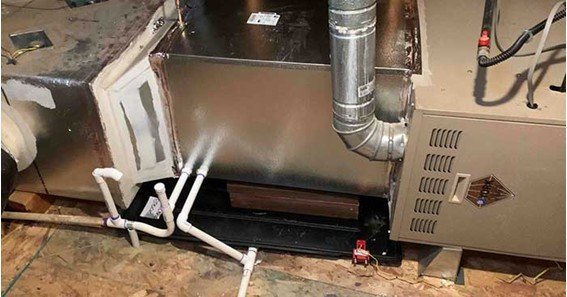The drain pan for AC unit is a vital component that collects condensation produced during the cooling process. As warm air passes over the evaporator coils, moisture condenses and drips into the drain pan, which then channels the water away through a drain line, preventing potential water damage to your home.
Maintenance Tips for Your AC Drain Pan
Regular maintenance of the drain pan is crucial to prevent issues such as mold growth, clogs, and water leaks. Here are some tips:
-
Monthly Inspections: Check the drain pan for standing water, rust, or cracks.
-
Cleaning: Use a mild detergent to clean the pan and remove any algae or mold buildup.
-
Pan Treatments: Consider using pan treatments that release bactericides to prevent microbial growth and clogs.
Signs Your Drain Pan Needs Attention
Be alert to the following signs indicating potential issues with your drain pan:
-
Water Leaks: Pooling water around the indoor unit may suggest a cracked or overflowing drain pan.
-
Musty Odors: A damp smell can indicate mold or mildew growth due to standing water in the pan.
-
Visible Damage: Cracks, rust, or corrosion on the pan’s surface necessitate immediate attention.
Replacement Costs for AC Drain Pans
The cost of replacing a drain pan varies based on the type and complexity of the AC unit:
-
Standard Replacement: Typically ranges from $200 to $600, including parts and labor.
-
Complex Installations: In cases where the unit is in hard-to-reach areas like attics, costs can escalate to $800 or more due to additional labor.
Frequently Asked Questions
Q1: What is the primary function of the drain pan in an AC unit?
A: The drain pan collects condensation from the evaporator coils and directs it away from the unit, preventing water damage.
Q2: How often should I inspect my AC’s drain pan?
A: It’s advisable to inspect the drain pan monthly, especially during peak usage seasons, to ensure it’s free from debris and damage.
Q3: Can I repair a cracked drain pan myself?
A: Minor cracks might be patched temporarily, but it’s recommended to replace the pan to avoid future leaks and ensure proper function.
Q4: What causes a drain pan to overflow?
A: Common causes include clogged drain lines, excessive condensation, or a damaged pan that doesn’t drain properly.
Q5: Are there preventive measures to avoid drain pan issues?
A: Regular maintenance, including cleaning and using pan treatments, can prevent clogs and microbial growth, extending the pan’s lifespan.










